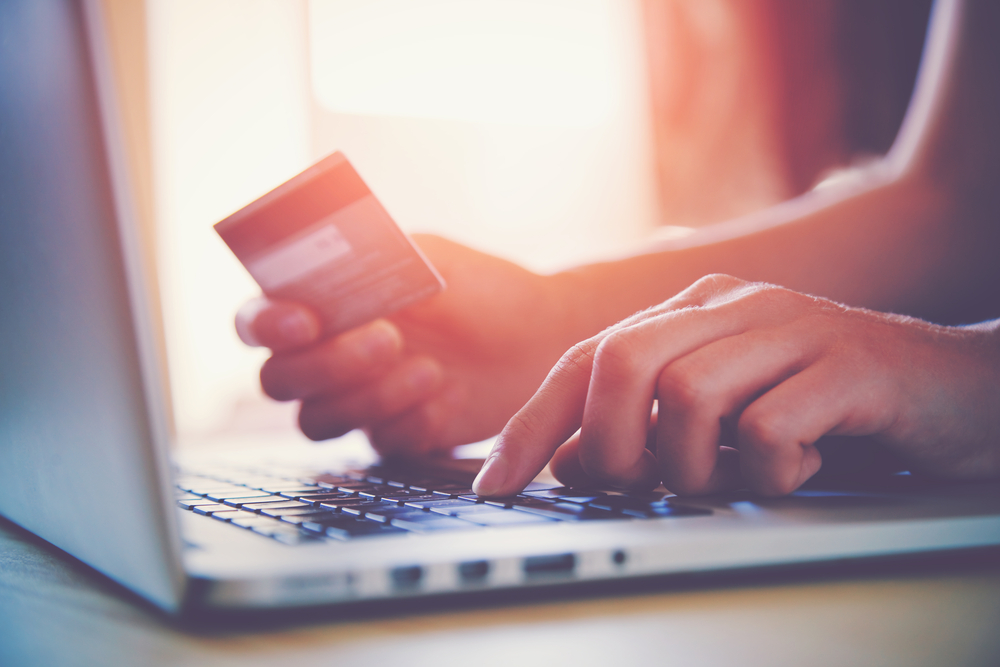
Digital payments and online banking explained
Face-to-face encounters have become less frequent in so many areas of our lives – and banking and shopping are no different. So, now’s an ideal time for older Australians to start integrating more digital transactions into their everyday banking. Using these methods for the first time can be intimidating, so we’ve answered some of the key questions you might have about digital transactions and online finance.

What are contactless payments?
In the wake of the COVID-19 (Coronavirus) health crisis, many shops and businesses have moved away from cash and are accepting payment by credit or debit card only. If you go into a store to buy something, you’ll likely be asked to use the ‘contactless’ payment method. This is simply a payment that’s processed in real time by holding your debit or credit card near the card reader without the need to swipe or insert it.
Also known as Tap & Go, this method allows you to make a purchase of up to $200 (temporarily increased from the $100 pre-COVID-19 limit) by simply hovering your card above the machine – you won’t need to enter a PIN.
If your transaction is in excess of $200, you’ll need to enter a PIN. Use one hand as a barrier over the keypad to prevent anyone else seeing your pin entry.
It’s also worth mentioning that some merchants may pass on the costs they incur to use these processing systems. If you are charged, the surcharge varies between merchants. You may find you’ll have to pay a small percentage for credit and debit purchases; however, merchants will generally let you know before the transaction.
How do I pay bills online?
Generally, a bill that you’d normally pay in person or at the post office can be paid online through online banking, using the secure and safe electronic payment system of BPAY, a widely used bill payment service.
Each bill you receive has its own unique BPAY information, which is located at the bottom of the bill. To pay a bill using BPAY:
- you’ll need to log in to your own online banking system
- go to the section where you pay someone or transfer money
- select BPAY as the payment method, and
- enter the information you find on your bill.
What details do I need to give when I’m shopping online?
While older Australians are still the most likely age category to prefer paying with cash, habits are changing we’ve seen a steady and significant move to payment methods other than cash in the over-65 age group.
When you purchase something online, you’ll be asked to enter your details, including your name, address and contact details for the delivery. You’ll also be asked for the debit or credit card number that appears on the front, as well as the CVC or CVV number, which is the three-digit number printed on the back of your card or four-digit number on the front of the card above the main numbers. This is an important anti-fraud measure to ensure that only you, the card holder, can make purchases online.
As a convenient feature on your computer or mobile phone, you may be prompted with a pop-up message to save your debit and credit card details for quicker checkouts when online shopping in future. If you don’t feel comfortable storing them digitally on your computer or mobile phone, you can reject or opt out of the pop-up request.
I’ve heard that online banking and shopping can be unsafe. How can I reduce this risk?
It’s true that if you’re online, there can be a risk of online fraud and ‘phishing’. Phishing is the sending of fraudulent messages through channels such as email, social media and text messages that are designed to steal your confidential information. However, there are several steps you can take to increase the safety of your finances and details online.
- Never give out your personal information or details via email, text message or over the phone, unless you have called your financial institution directly.
- Never enter sensitive details into a website you’ve arrived at by clicking on a link, including any links you’ve received in an email or text message. In particular, you should always go directly to the website of a financial institution or online banking system, rather than via a link.
- Familiarise yourself with scams that are circulating so you can stay informed. A regular update of these appears on the Stay Smart Online website.
Looking out for fraud during COVID-19
The COVID-19 outbreak provides a further smokescreen for fraudsters. Pretending to be legitimate businesses, from charities to your local supermarket, they hope to exploit confusion and the absence of face-to-face contact to gain your money and information.
If you suspect suspicious activity online or have been contacted via email or phone by someone who you think could be running a scam, it’s important that you contact your financial institution immediately to discuss the details.
Source: AMP





